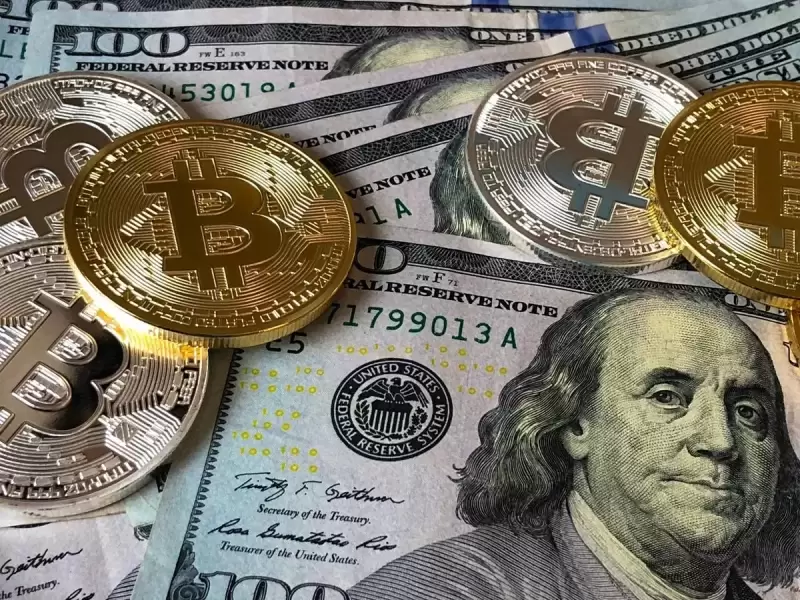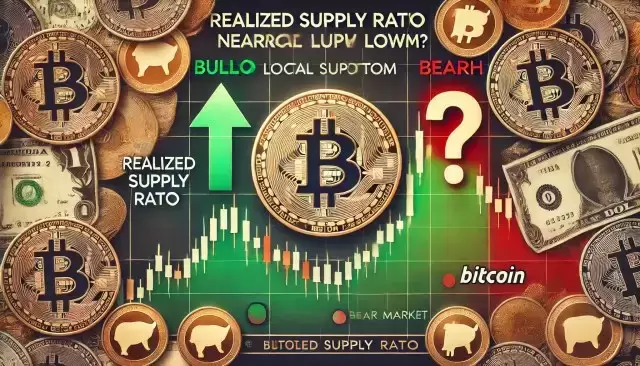 |
|
 |
|
 |
|
 |
|
 |
|
 |
|
 |
|
 |
|
 |
|
 |
|
 |
|
 |
|
 |
|
 |
|
 |
|
Cryptocurrency News Articles
Bitcoin’s Inverse Correlation with the US Dollar Index (DXY)
Apr 03, 2025 at 02:17 pm
Bitcoin’s relationship with traditional financial markets has evolved, making its correlation with the US dollar (USD) an essential factor for forex traders.

Bitcoin’s relationship with traditional financial markets has evolved, making its correlation with the US dollar (USD) an essential factor for forex traders. While Bitcoin operates independently of central banks, its price movements often align with macrotrends influencing the US dollar, including interest rates, inflation and liquidity shifts.
Over the past five years, Bitcoin’s correlation with the US Dollar Index (DXY) has fluctuated between -0.4 and -0.8, meaning it often moves opposite the dollar but not always consistently. For forex traders, this relationship presents both opportunities and risks, particularly when analyzing BTC to USD price trends alongside major forex pairs.
Understanding Bitcoin’s Inverse Correlation with the US Dollar
It is well established that the particular exchange rate relating to bitcoin is between the dollar and bitcoin. However, like the value of any major fiat currency, cryptocurrency is also affected by interest rates, monetary policies and global liquidity trends, so its price does not move in specific, symmetric ways.
It is well known that bitcoin shows a strong negative correlation with the dollar index (DXY), which measures the value of the dollar against major currencies.
The Correlation Mechanism:
Take the last quarter of 2022, for example. The DXY Index of America’s dollar rose to its highest mark in twenty years at 114. This was due to the continuous rate hikes of the Federal Reserve. During this period, Bitcoin dropped drastically from $47,000 to under $16,000 as speculative market assets were losing the funds they had received.
As seen at the end of 2023, when the dollar value decreased, investors shifted into taking calculated risks and were able to push Bitcoin’s value beyond 40,000.
The DXY had a correlation of -0.65 with Bitcoin in the first quarter of 2024, showing how deeply the world’s monetary system impacts Bitcoin.
The reason for stating Bitcoin and the US dollar’s inverse movement:
1. Rates of Interest and Monetary Policy
When the Fed raised rates sharply in 2022, Bitcoin plummeted more than 60% as the cost of borrowing increased, leading to capital outflows from speculative markets.
2. Public Sentiment Towards the Market and Risk Desire
BTC behaves like a speculative liability and has a resemblance to currencies in forex trading and high-growth stocks.
Foreign exchange traders use BTC’s price movement as a marker for risk sentiment changes.
Bitcoin’s Effects on Major Currency Pairs
BTC is known for its epic, intense correlation with the DXY Metric, although it also has an impact on particular forex currency pairs that are sensitive to the US dollar’s strength or weak risk sentiment in addition to the dollar-BTC pair.
1. BTC with EUR/USD: The Greatest Macro Pair
2. BTC and USD/JPY: Moving Towards Safe Haven
3. BTC and Other Market Currencies (USD/TRY, USD/ARS, USD/ZAR)
With the rise in popularity of Bitcoin, forex traders are paying attention to the precious currency’s volatility with hopes of forecasting emerging and developed nations’ foreign exchange currencies.
Hedge Funds: How They Trade Forex and BTC and Their Institutional Impact
Hedge funds, asset managers and other institutional traders profit from large moves in price after trading Bitcoin along with the major currencies.
2024 witnessed a surge in the derivative trading volume of Bitcoin, surpassing 4 trillion US dollars, which clearly demonstrates a shift of the traditional currency investors towards Bitcoin.
Key Considerations for Forex Traders Watching BTC to USD
A Final Thought
Bitcoin’s integration into the economy makes it easier for traders to make decisions based on the BTC/USD price pairs. At times, Bitcoin’s inverse reaction to the DXY shows how interest rates, the state of liquidity in the economy and the risk appetite of the market affect both currencies.
Monitoring the movement of Bitcoin against the dollar and major currency pairs such as the euro to the dollar, dollar to yen and developing markets gives traders the Bitcoin economic advantage.
Disclaimer:info@kdj.com
The information provided is not trading advice. kdj.com does not assume any responsibility for any investments made based on the information provided in this article. Cryptocurrencies are highly volatile and it is highly recommended that you invest with caution after thorough research!
If you believe that the content used on this website infringes your copyright, please contact us immediately (info@kdj.com) and we will delete it promptly.
-

-

-

-

-

-

-

-

-

- Avalanche (AVAX) Experienced a Notable Stablecoin Supply Surge, But Passive On-chain Use May Be Limiting Demand
- Apr 05, 2025 at 12:15 pm
- As per the post from the Avalanche, the supply has increased by over 70% in the past year, rising from $1.5 billion in March 2024 to more than $2.5 billion as of March 31, 2025.
























































